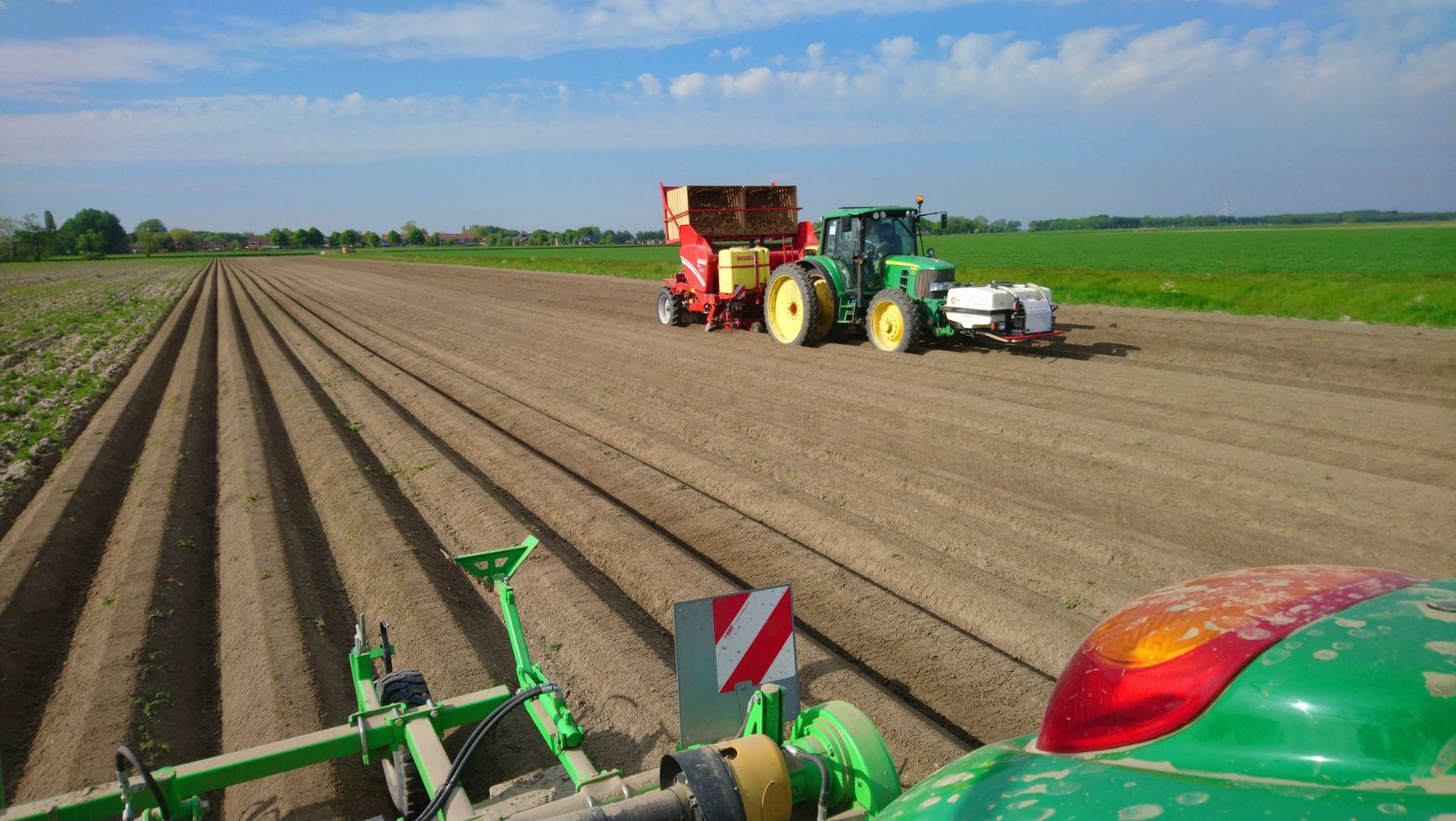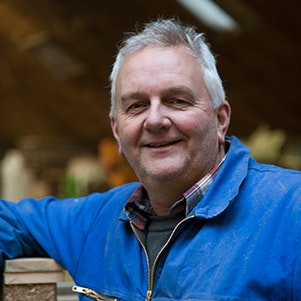Anselm Claassen in Vierhuizen (Gr.) is using a new planter this season for the variable planting of part of his seed potatoes. He has been experimenting with a variable planting distance for several years now.

As of 2019, Claassen will receive professional guidance as an NPPL participant. “I would like to investigate the added value of variable planting on yield and size sorting”, says Claassen
Overrule
The arable farmer is happy to talk about the advantages of his new Grimme planter with a cci1200 isobus control. “The special thing about this is that we can overrule a read-in task card and the set planting distance in the cci1200 screen. This means that we can continuously adjust the planting distances from the task card itself in the machine.
So, if desired, adjust it up or down by a certain percentage relative to the average planting distance. That works very easily, because then it is not necessary every time to go to the farm with the USB stick to make a new task card on my computer.” According to Claassen, that is a major advantage of this new machine, but it doesn’t stop there.
Optimal planting distance
In addition, the new planting machine can now carry out the optimum planting distance per element. “The new planting machine calculates the planting distance for each element. With the old planter, that was the average of the four elements.”
Each element is driven separately and controlled separately by the computer, whereby the elements determine the planting distance independently of each other. “After every five meters of planting, the machine automatically calculates the average planting distance and adjusts it if necessary. The element will rotate faster or slower depending on the size of the tubers. That makes variable planting even more accurate.”

Do not plant on parts of the plot
With a task card, the machine can also be set in such a way that a part is not planted. “For example, we did not plant blocks at three different potential zones. Because SPNA has set up a trial there with different planting distances to determine the calculation rules for variable planting for seed potatoes on clay soil.”
Another advantage is that the new planter is equipped with portal axles that can rotate 35 degrees. This allows us to get back on track faster and very easily, without driving over the ground unnecessarily.”
Variable planting potatoes
This application makes it possible to adjust the planting density within a plot based on a map about the variation in clay contents and the location of shadow zones and tramlines of sprayers, together with a set of calculation rules and modern potato planting technology.
Precision application: variable planting of potatoes for an optimal and even stem distribution, and thus an even grading.
Technique: varying planting distance based on soil data from soil scans.
Status: prototype, there is ample experience with variable legs next to the spray tracks and areas with shade. Experiments are still being carried out with planting distance based on a lutum card.
Benefit for the grower: expected increased yield of up to 5% due to optimal growth and uniform sorting. Costs for technology and support are approximately € 30 to € 40 per hectare per year.
Environmental benefit: positive. Optimal growth means optimal nutrient uptake.
Food safety gain: positive. Increase in yield and more homogeneous quality.
Transparency: the grower shows that his raw materials (seed potatoes) are used efficiently.
Bottleneck(s) for adoption: (1) unfamiliarity with the possibilities, (2) investments, condition for variable planting on GPS is a planter that is hydraulically controlled, (3) task cards cannot always be read into the software of the planter. Assume a total of € 15,000 extra investment. With depreciation in 5 years and 100 ha of potatoes, that is € 30/ha/year. A soil scan costs € 175/ha.
Solution direction : growers who want to work with this application in an NPPL context will receive training in use and support during the implementation during the season.


